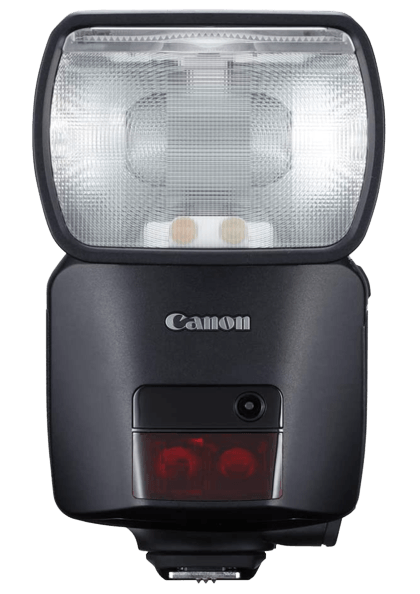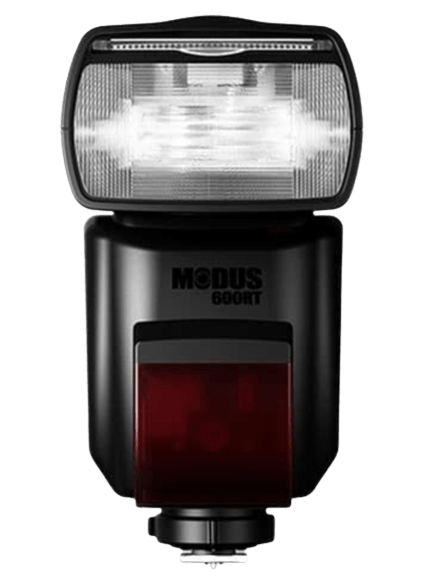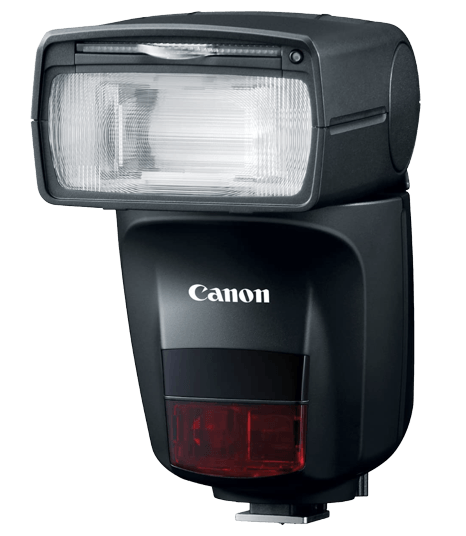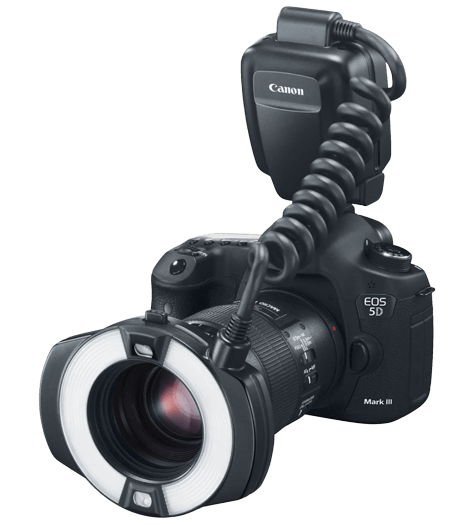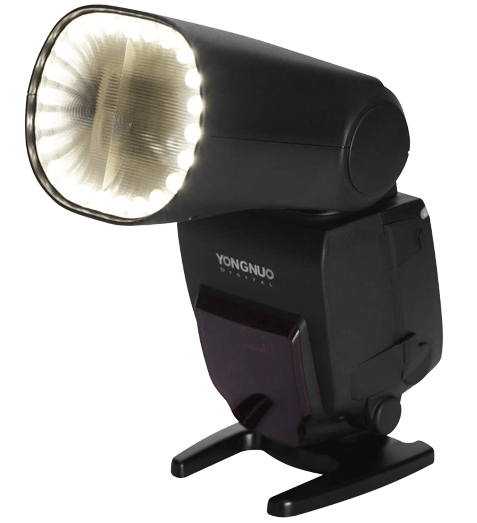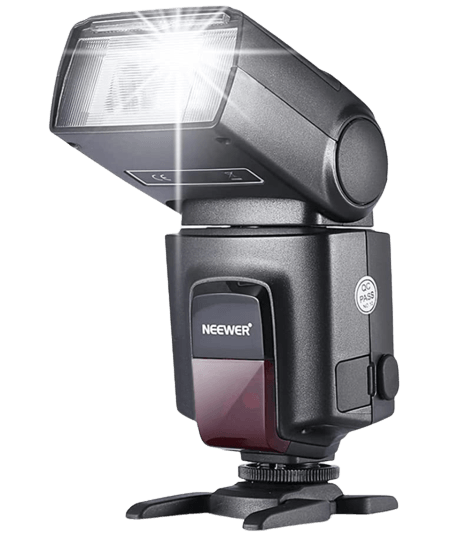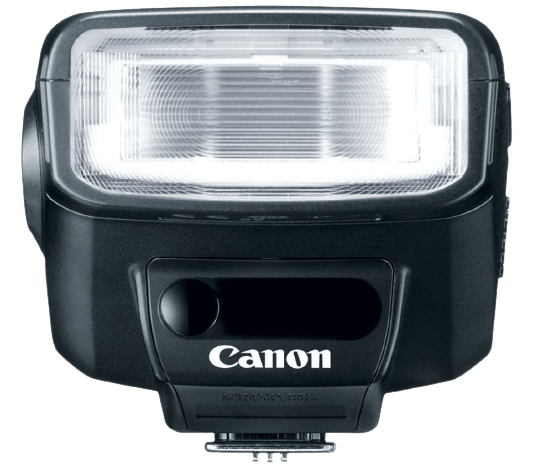We’ll also provide tips for choosing the right flash for your needs. So whether you’re a beginner or an experienced photographer, read on to find the best flash for Canon cameras. Our top choice is the Canon Speedlite EL-1. It’s a professional flash that is reliable, precise, and durable. [Note: ExpertPhotography is supported by readers. Product links on ExpertPhotography are referral links. If you use one of these and buy something, we make a little bit of money. Need more info? See how it all works here.]
The Best Flash for Canon (Top 12)
Here is a range of the best flash units for Canon cameras. I have broken down each flash, highlighting its size, weight, guide number (GN), rotation capabilities, and zoom range. (Jump to the end to learn more about flash specs.) The Canon Speedlite EL-1 is for professional photographers who don’t want to sacrifice quality when shooting time-conscious subjects. You can tell Canon thinks highly of its newest creation. It’s the first flash unit to feature the red ring found on its top series of lenses. It is also the first flashgun to feature a rechargeable lithium-ion (Li-on) battery. This means it can hold more power and is easier to handle on a day-to-day basis. The golden feature of this flash is its refresh rate. Even at full power, it only takes up to 0.9 seconds until it’s good to go again. That makes the EL-1 the perfect flashgun for sports photographers or action photographers. The Profoto A10 is described as a “studio on-camera flash” rather than a flashgun. This is no surprise, as Protofoto is known to produce some of the best studio lights in the business. The A10’s unique circular flash head places it apart from other flashguns on the market. I enjoy the intuitive interface featured on the A10. It makes it extremely easy to use and helpful when shooting in high-pressure situations. Its fast refresh rate also lends itself to shooting in fast-paced environments. The Canon Speedlite 600EX II-RT is a top-of-the-range flashgun for Canon cameras. This flash will work just as well as an on- or off-camera flash. And it gives you complete control and reliability even in the toughest situations. It allows you to even shoot remotely up to 30 meters away! This flash unit also provides the broadest zoom range for a Canon camera. Of course, it still takes standard AA batteries. But it also has a socket to attach an external power supply. I recommend getting rechargeable AA batteries. This way, you don’t need to constantly buy more. If you’re looking to get the best possible value for money, it’s worth checking out third-party manufacturers. The Hahnel Modus 600RT II is packed with great features and is only a fraction of the price of other products similar to this flash kit. Looking at its specifications, the Modus 600RT II doesn’t just keep up with its competition. It surpasses them in many ways. It takes a Li-ion battery, which means replacing the battery can be expensive. But this also means it has an impressive refresh rate that won’t have you waiting around. And it is probably cheaper than constantly buying AA batteries. Another point to consider is that its weather sealing and build quality isn’t as refined as bigger brand products. The Canon 470EX-AI introduces artificial intelligence into Canon’s range of flashguns. Canon is very excited about this groundbreaking technology. They claim it is the first-ever flash with AI-bounce technology. The AI is interesting because it features a motorized head. It adjusts itself according to the distance between the subject, the camera, and the ceiling for the bounce. That means you can change your positioning while shooting. Then the flash automatically adjusts itself for perfect lighting! The Canon 430EX III-RT is the go-to Canon flash to get the most bang for your buck. It has a wide range of advanced functions and a significant zoom range. This is the perfect option if you’re a well-rehearsed photographer looking to get your first external flash. One of my favorite features is how quickly this flash can reload. Even on the flash’s highest output, you get a refresh speed of around 2.5 seconds. The only issue is that you cannot use it to trigger other Canon Speedlites that only have infrared sensors. The Canon Macro Twin Lite is a fantastic example of how well specialist equipment develops in photography. This setup provides a complete, fully adjustable rig for your macro lens. So whether you want to use a single light in one direction or two lights operating from either side, this has you covered. A flash like this benefits a photographer working in archives or museums who constantly need to take detailed macro images. It is an expensive piece of kit, so it’s best for specialist photographers who use it often. The Lite MR-14EX II is Canon’s macro ring light that you can use primarily for macro photography. Ring lights are great fun and provide the most even light possible for macro shots. The ring light attaches to the front of your lens, giving light 360 degrees around the lens. A great feature of the ring light is that you can choose to use either side of the light. That means you have more control over lighting choices than most ring flashes offer. Of course, you must be careful because the ring flash provides a pretty noticeable reflection when shooting on reflective surfaces. The Yongnuo YN650EX-RF is another cheap flash option with good power. But it lacks some necessary features. And even though that’s the case, it has more features than the previous flash. Of course, you pay a bit more for them. But again, the price is relatively low. You get TTL (through the lens) or HSS (high-speed synch) capabilities and pretty good power output and zoom functions. This is good for an amateur photographer not looking to spend too much money. The Neewer TT560 is an excellent option for a beginner in photography. I say this because you will struggle to find a better price for a similar flash kit. It should stay at a beginner’s level due to its reliability. You will find that the flash works fairly evenly on your subject, but you may have slight vignetting on the outer areas of your photos. For that reason—and because there is no TTL exposure control—I suggest it’s best suited to introduce someone using a flash. If you are unsure if you will use a flash a lot, this option is light on the pocket and provides a good feel for this photography technique. The Canon 270EX II flash head is almost like a glorified built-in flash. You might think that’s a bad thing. But the one extra feature we would all love from a built-in flash is to be able to place it somewhere else. The 270EX II allows you to do this while also giving you tilt functions. This Canon flashgun is the most basic one for Canon cameras. It has no manual controls and functions with TTL metering. This flash kit is handy for amateur photographers who want to place external flashes in different places around your shot. It has an impressive refresh rate of 3.9 seconds for a flash that only takes two AA batteries! The Canon EL-100 is a small flashgun that packs a punch. It is amazing how modern technology can produce the same power as the big flash guns from back in the day. Because this is an entry-level flashgun, you miss out on critical features that allow you extra control. But you still get HSS capabilities and some form of zoom, even though it is pretty limited. I recommend this flashgun for people who need a step up from their built-in flash but don’t need extra control features. It is also a great introductory external flash for someone with a camera without a built-in flash.
What is a Camera Flash?
An external flash—commonly referred to as a flash unit or a flashgun—is an attachment that syncs with your camera and provides a burst of light. You can connect the flash through the camera’s hot shoe or a cable. They can also connect wirelessly through infrared or radio frequencies. Flash photography allows you to capture scenes in low-light situations. If you have a built-in flash, you may notice that it produces flat light and doesn’t allow complete control. An external flash changes this. All external flashes allow you to swivel and tilt the flash head to let your light come from different directions. You can also change the power and zoom range of the flash for each photograph you take.
Functions of an External Flash
Here are the main features of camera flashes to consider when buying one.
Through the Lens (TTL) Metering
TTL metering is a system that flash units use to achieve accurate exposure. It is similar to a camera’s automatic mode, where the flash changes its intensity according to the camera’s exposure settings. It uses the camera’s metering system to adjust its exposure settings and calculate the distance to your subject. TTL is a handy feature to have when photographing multiple subjects in a short space of time. It is beneficial for event photography.
Zoom
Some flashguns have a zoom feature that allows the flash to compensate according to your lens’s focal length. This calculation improves the efficiency between the power of the flash and the light that falls on your subject. The flashgun changes its internal structure to allow this to happen. The beam narrows or widens according to the distance, making the light more effective and efficient.
Radio Frequency (RF)
Good flashguns usually have a master and slave mode. This means they connect with the camera, and each other, to provide wireless synchronization. The top flashguns use radio frequencies, providing a more flexible sync than infrared synchronizations. Unlike infrared, RF allows you to position your flashgun behind objects or further away. Flashguns that use infrared have to be close and viewable by your camera or the master flash.
High-Speed Sync (HSS)
Top flashguns have an HSS mode that allows you to shoot with faster shutter speeds. It usually comes with reduced power, but this mode enables you to shoot faster-moving subjects or in the daytime with greater ease. If you have ever shot with a flashgun before, you may have come across an image where a section of the image is entirely black. That is due to your shutter being faster than the flash. HSS allows you to push the shutter speed further than expected.
Guide Number (GN)
You can work out the power of a flash by looking at its guide number. This mathematical equation is applied to each flash and gives you an idea of how powerful the light is. The GN calculates the aperture you should use for a subject ten feet away when shooting at an ISO of 100. It is the industry-standard test for different flashes. But you can use the GN equation to determine the correct exposure accurately.
Conclusion
After looking at our list, you can see the best Canon camera flashes for certain levels of photographers. You will also notice that the features vary from flash control to battery life. Make sure you think about the environments where you will use your flash, as this helps dictate the best one for you. If you’re looking to buy the best option for your Canon camera, we suggest the Canon Speedlite EL-1. You can’t go wrong with Canon’s top-of-the-range Speedlite. It has a quick refresh rate and a versatile range. You can rely on it for a lot of situations.
